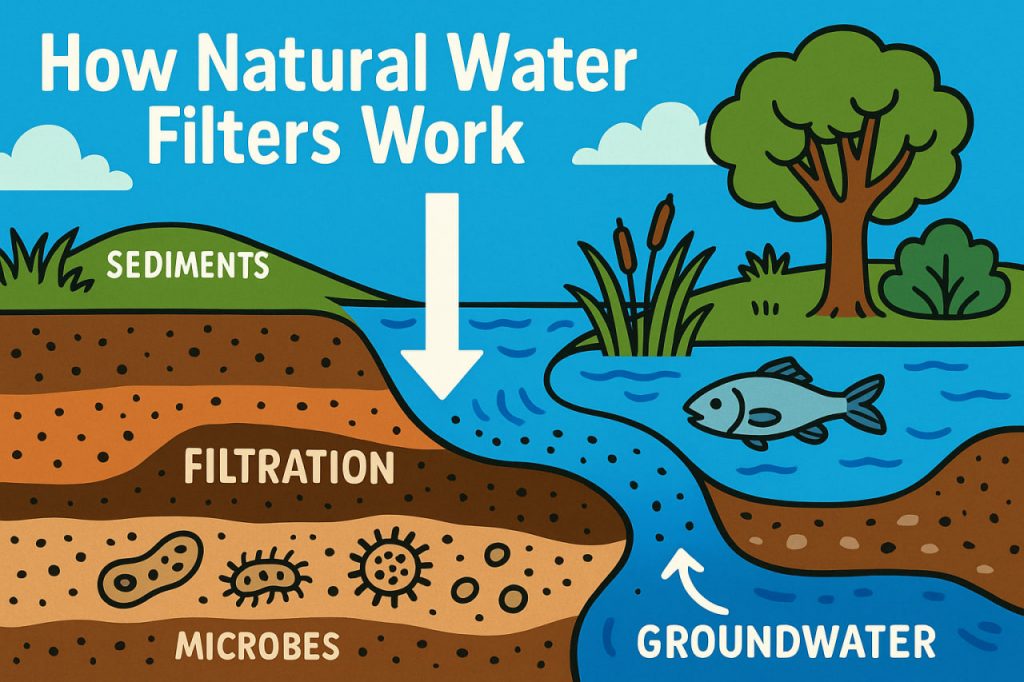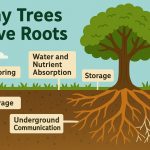Clean water is essential for all life, and nature has developed impressive ways to keep it that way. From wetlands and forests to soil and underground rock layers, natural water filters quietly purify and protect freshwater sources around the world. Understanding how these systems work can help us protect and even mimic them to improve human water management.
What Are Natural Water Filters?
Natural water filters are environments or materials that clean water as it passes through them. Unlike artificial filters, they don’t use machines or chemicals. Instead, they rely on physical, chemical, and biological processes to remove dirt, bacteria, and pollutants from the water.
These filters include:
- Soil and sand layers
- Wetlands and marshes
- Gravel and underground aquifers
- Plants and microorganisms
How Soil and Sand Clean Water
When water seeps through soil or sand, sediments, bacteria, and even some chemicals are trapped in the tiny spaces between particles. This is known as filtration. As water continues downward, it becomes cleaner due to:
- Physical filtration: Large particles are stopped by soil grains.
- Chemical reactions: Soil minerals react with harmful substances, neutralizing them.
- Biological action: Microbes in the soil break down organic matter and harmful bacteria.
This is why groundwater—which passes through many layers of earth—is often much cleaner than surface water.
Wetlands: Nature’s Living Filters
Wetlands are among the most effective natural filters. These areas—rich with water, plants, and microbes—trap pollutants, absorb heavy metals, and break down harmful substances. Water slows down in wetlands, allowing sediments to settle and nutrients like nitrogen and phosphorus to be absorbed by plants.
Wetlands can filter stormwater runoff, agricultural waste, and even sewage, helping to restore balance to polluted ecosystems.
Aquifers and Rock Layers
Beneath Earth’s surface, aquifers—underground layers of porous rock—hold and filter water. As water moves through gravel, sand, and rock, it undergoes long-term filtration. This slow movement through natural layers improves water clarity and safety, making aquifers valuable for clean drinking water supplies.
However, over-pumping or pollution from surface activities can damage these delicate systems.
The Role of Trees and Forests
Forests help filter water in several ways:
- Tree roots stabilize soil and prevent erosion.
- Leaf litter slows runoff and allows more water to seep into the ground.
- Forests reduce pollutants entering water bodies by capturing them before they can spread.
Protecting forests means protecting freshwater.
Why It Matters
Natural water filters are essential for maintaining water quality, reducing the need for costly treatment systems. They also support wildlife, reduce flood risk, and store clean water for dry seasons. Restoring or preserving these natural systems is one of the best ways to ensure a sustainable water future.
Glossary
- Filtration – The process of removing particles from water by passing it through a material.
- Sediments – Small particles of soil, sand, and debris found in water.
- Groundwater – Water that collects underground in soil and rock layers.
- Nitrogen and phosphorus – Nutrients that, in excess, can pollute water.
- Aquifer – A layer of rock or sand underground that holds water.


